The press comments section opened with news articles about engineering feats of Indians. The first article, pulled from the Century Magazine, discussed Chief Joseph of the Nez Perce. Courtney Ryley Cooper, author of the next article, wrote about the Battle of Wounded Knee. The final article, pulled from the Boston Herald,…
Red Man, The (1910-17)
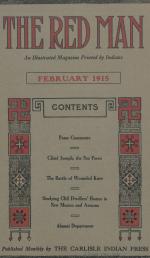
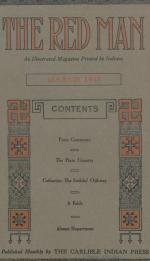
The opening press comments section included various articles, pulled from newspapers across the country, about American Indians. The first article, written by John Ris, wrote about "Paiute Country" in the Southwest. Next, Charles E. Waterman wrote about Catherine, a member of the Ojibway Nation. The next article, pulled from the Bennet County…
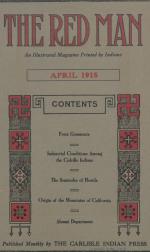
The issue opened with an editorial comment on the Everglade Seminoles and the desire to open the Colville Reservation to settlement. The press comments section followed. The first article, written by F. F. Avery, discussed the Colville Indians and their industrial approaches and practices. The use of funds was particularly notable in the…
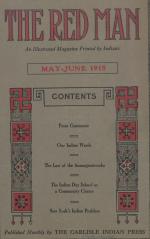
The press comments section opened the issue. Will M. Maupin wrote the first article in which he discussed the need for schools on Indian lands. Maupin referred to the Genoa Indian School in Nebraska as an example of excellence. Next, Charles E. Waterman discussed Metalluk, the last of the Ananagunticooks who used to roam the valley of the…
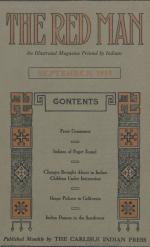
The opening press comments section contained brief articles pertaining to Indians, pulled from publications such as the New York Post, the San Francisco Chronicle, etc. The first article, written by Charles M. Buchanan, discussed the Indians living in Puget Sound. Next, in an article pulled from the American Museum Journal…
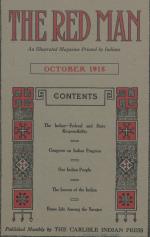
E. A. Allen, Superintendent at Chilocco Indian School in Oklahoma, discussed the need for state governments to acknowledge issues that Indians face. Next, in a general report from the United States Indian Service, the progress of Indians and what more can be done was covered. In the following article E. B. Linnen, Chief Inspector with the…
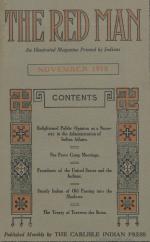
Superintendent Oscar H. Lipps argued that favorable public opinion of Indians was necessary for success in the Administration of Indian Affairs. Next, Mazie Crawford discussed the religious ritual of camp meetings of the Nez Perce. The following article, pulled from the Salem News, covered the stance different American Presidents took…
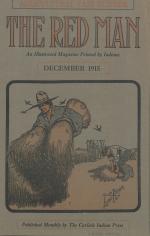
This issue focused on agriculture. The opening editorial statements covered "the Indian as a Farmer" and the ownership of land. The following press comments were pulled from publications such as The Outlook, The Oklahoman, South Dakota's Daily Republican, Christian Science Monitor, Minnesota's Duluth…
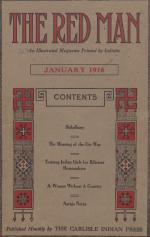
The first article, written by the Secretary of the Indian Rights Association M. K. Sniffen, detailed the case of Tse-Ne-Gat (Everett Hatch) and the resulting "Ute War" in Bluff, Utah. Hatch was charged, and later acquitted, of the murder of a Mexican sheepherder. The following article, "Training Indian Girls for Efficient Home Makers",…
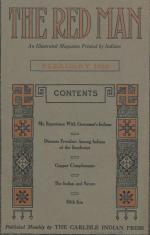
The first article, pulled from The Baltimore American, discussed tribal organization and rites of passage as reflecting nature. In the following article "My Experience with Geronimo's Indians in Arizona", pulled from the Overland Monthly, G. W. Miles wrote about a number of encounters with Indians while on a prospecting…
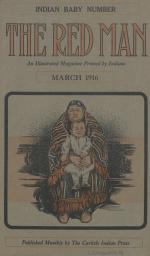
Articles in this issue appear under the title "Save the Indian Babies" and were written by doctors, physicians, and field matrons. In the opening article Cato Sells, Commissioner of Indian Affairs, called upon "Superintendents, Teachers, Physicians, Matrons, [and] Nurses" to improve efforts to lower the mortality rate, particularly among…
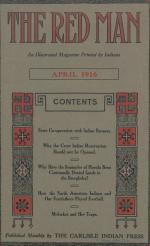
The first article, written by Robert Yellowtail the secretary of the Crow Indian Council, stated the many reasons the Council had voted against the opening of the Crow Reservation. In the following article, Minnie Moore Wilson wrote about the Seminoles struggles over land ownership in Florida. The article focused on many aspects of the issue,…

The legend of Queen Allaquippa is presented. A series of resolutions on the Seminoles, made by the Tampa Woman's Club, support the Seminole people's attempts to regain land in Florida. Lace making among the Pueblo Nation is discussed. An article from the New York Evening Post about the usefulness of Indian education,…

The first article, by George P. Donehoo, remembered the life of Sattelihu or Andrew Montour, son of Madame Montour, who spoke French, English, and numerous Indian languages and served British settlers in various capacities. Next appeared an article pulled from The New York Survey, which discussed peyote and its use among various Indian…

A description of this publication is not currently available.
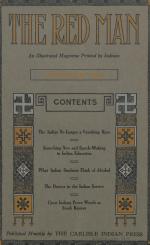
A description of this publication is not currently available.
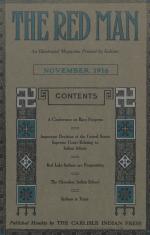
A description of this publication is not currently available.
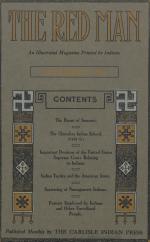
A description of this publication is not currently available.
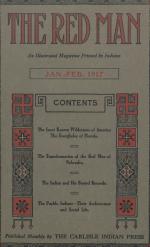
A description of this publication is not currently available.
Note: A page between 178 and 179 is missing.
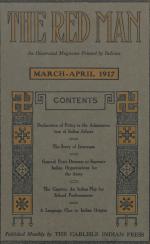
A description of this publication is not currently available.
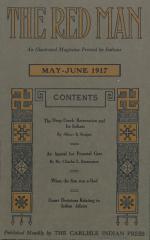
A description of this publication is not currently available.
